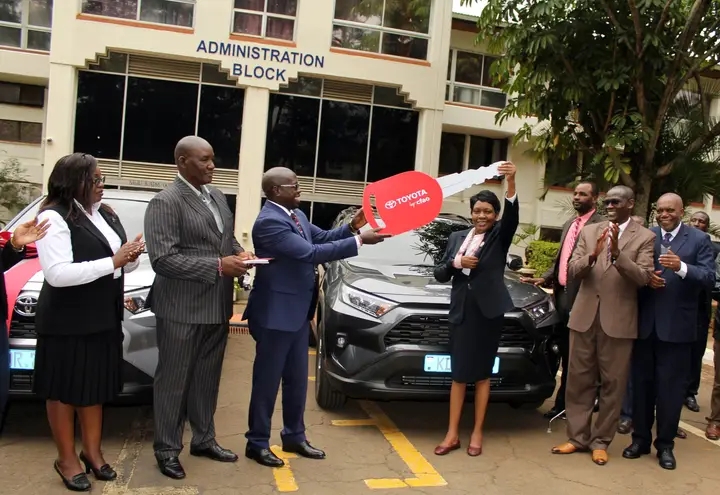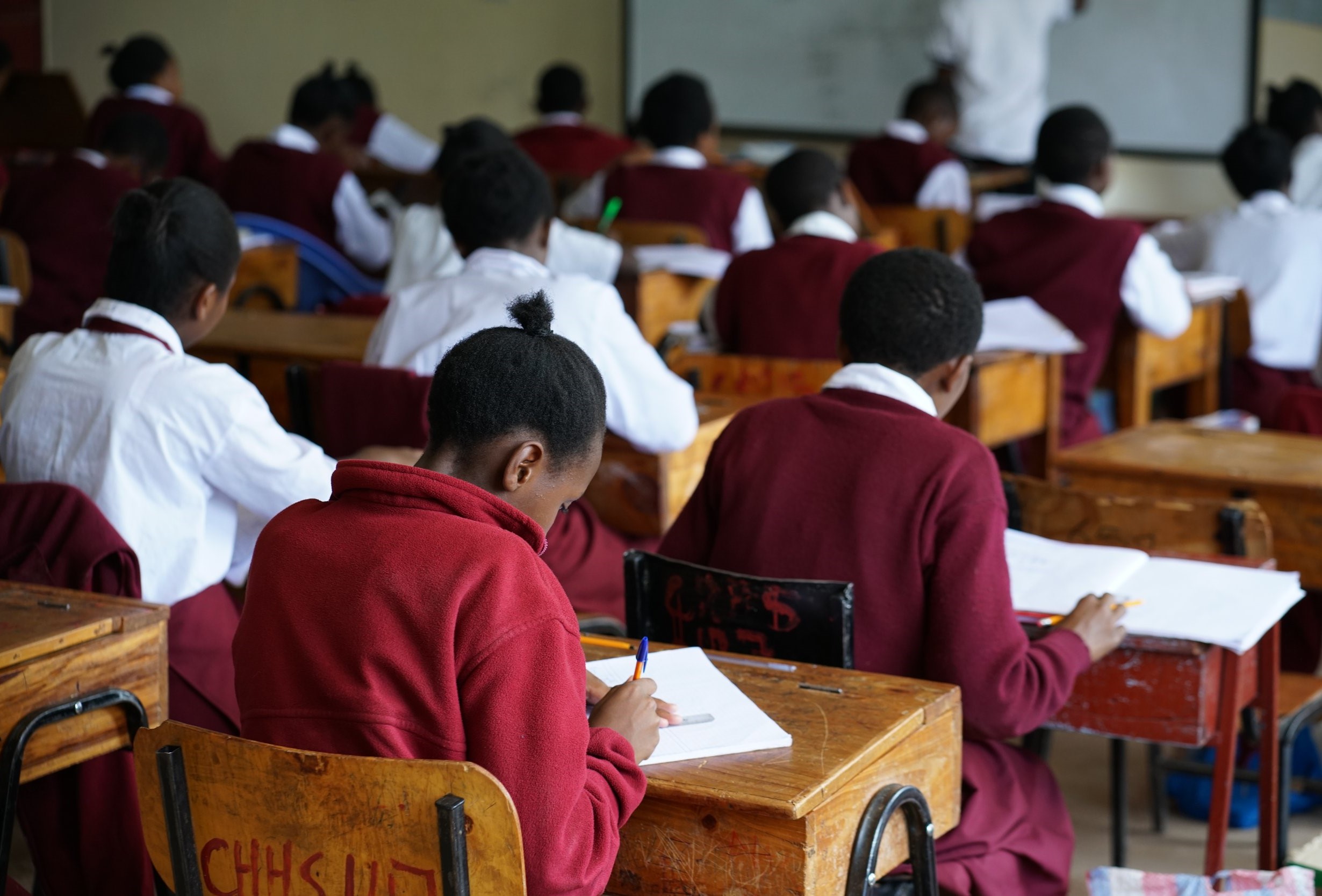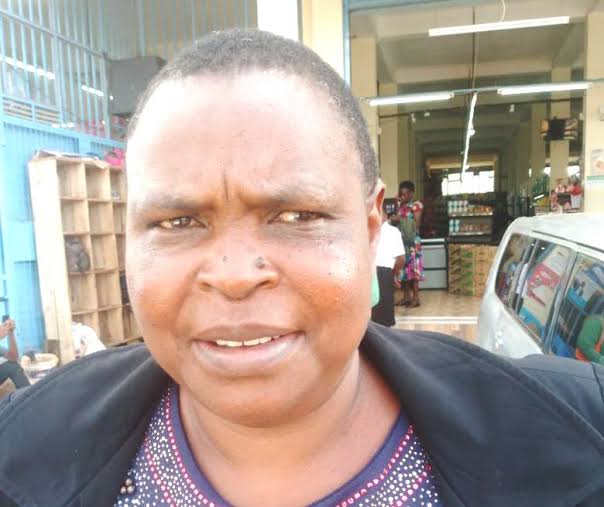The Multimedia University of Kenya (MMU) Council and the institution’s top management have pledged to continue acquiring strategic assets and infrastructure aimed at boosting operational efficiency, institutional visibility, and service delivery.
This commitment was reaffirmed on June 30, 2025, during the official handover of two brand new Toyota RAV4 vehicles to the offices of the Deputy Vice Chancellor – Academic Affairs, Research and Innovation, and Deputy Vice Chancellor – Finance, Administration, and Planning.
MMU Council Chairman Dr. Albert Kochei, who presided over the handover ceremony, described the vehicles as “strategic enablers of performance and accountability.”
“This milestone is more than a ceremonial act. It is a visible testament to the Council’s firm commitment to resource our leadership with the necessary tools to enhance operational effectiveness, institutional visibility, and service delivery,” said Dr. Kochei.
The vehicles were received from CFAO Kenya representatives Doreen Wairimu and Lorraine Atieno in front of the university’s Administration Block. Also present were Council member Dr. Moses Ole Sakuda, Deputy Vice Chancellors Prof. Geoffrey Kihara and Prof. Livingstone Ngoo, among other senior university officials.
ALSO READ:
Lekimbo Secondary eyes glory as Bomet County games kick off tomorrow
Dr. Kochei emphasized that the Council remains deliberate in fostering a productive work environment and committed to accountability.
“Let me take this opportunity to reiterate the Council’s unwavering commitment to staff empowerment, which we believe is the surest pathway to achieving institutional excellence. However, this empowerment comes with responsibility. It is therefore paramount that all university resources are utilized judiciously, with the highest standards of transparency and accountability. We have zero tolerance for wastage, mismanagement, or corruption in any form,” he stated.
Beyond the vehicles, Dr. Kochei noted that the university is implementing several key infrastructure projects. These include the procurement of 2,520 student hostel units, the ongoing completion of the MMU Library and Innovation Hub, the renovation and modernization of student hostels and lecture halls, and the facelift of the university’s Conference Centre.
“In the pipeline is the expansion of lecture spaces, incorporating modern, technology-enabled learning environments that are both cost effective and future ready. We are also actively considering the acquisition of student transport solutions, subject to resource availability,” he added.
ALSO READ:
South Mugirango releases KSh2 million for completion of Kebabe Secondary administration block
Vice Chancellor Prof. Rosebella Maranga supported these sentiments, stating that transport is a key enabler in achieving the university’s goals.
“We plan to invest in additional vehicles to meet the growing transport needs of the university. A top priority is the acquisition of a new bus to support student and staff activities,” she said.
She also revealed that the university is exploring the use of electric vehicles for short distance travel. “This is part of our commitment to sustainability and cost efficiency in fuel consumption,” added Prof. Maranga.
The VC thanked CFAO Kenya for delivering the vehicles on time and in accordance with the agreed specifications. She further announced that the previous vehicles used by the two DVCs would be reallocated to the general university fleet to help ease transport challenges.
Deputy Vice Chancellor – Administration, Finance and Planning, Prof. Geoffrey Kihara, assured that the university would uphold transparency in all procurement processes. “The management will always ensure that the process of acquiring any university asset is handled with integrity and within the law,” he said.
By Benedict Aoya
You can also follow our social media pages on Twitter: Education News KE and Facebook: Education News Newspaper for timely updates.
>>> Click here to stay up-to-date with trending regional stories
>>> Click here to read more informed opinions on the country’s education landscape






